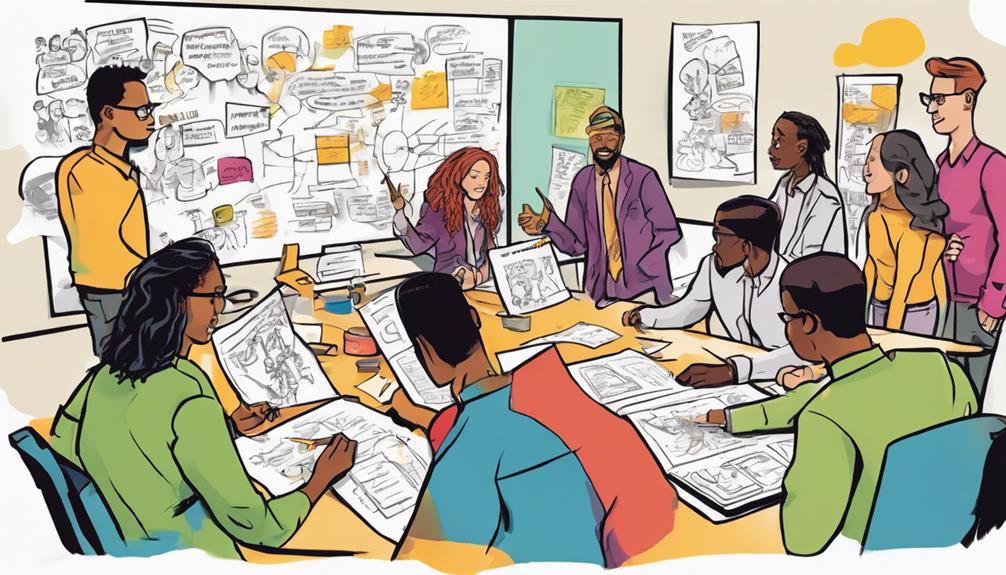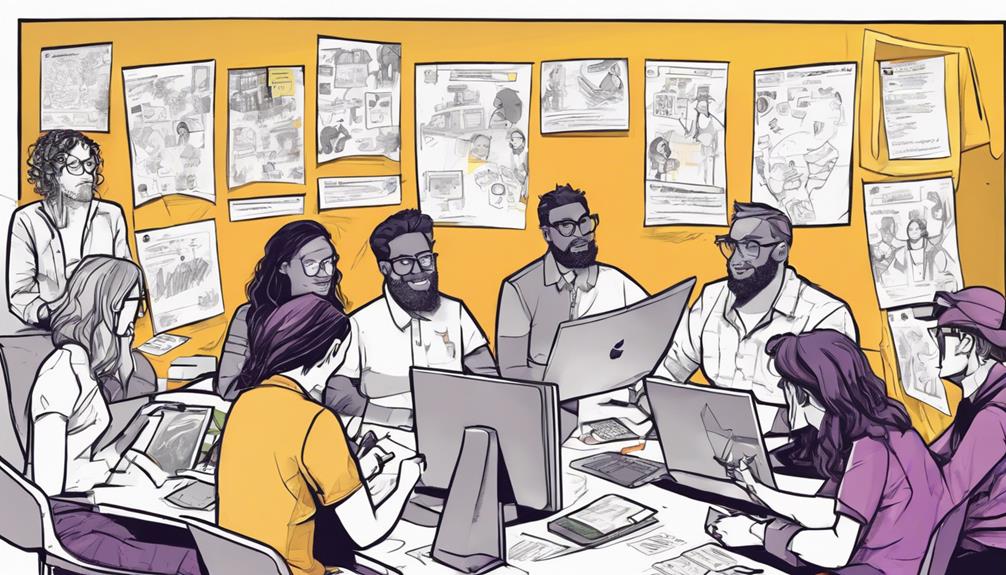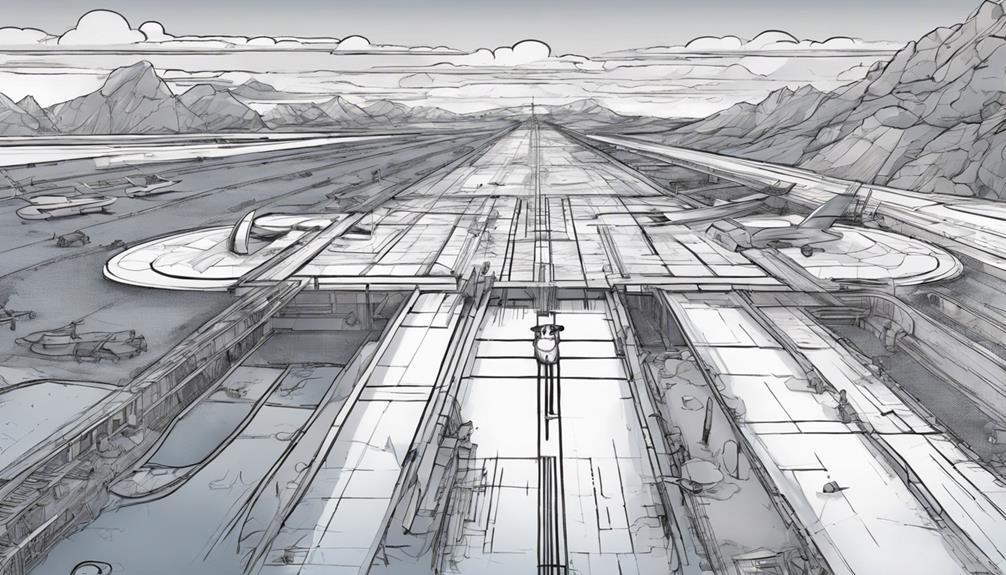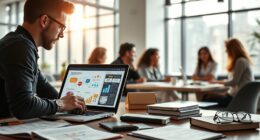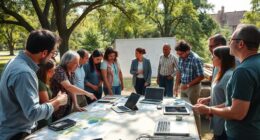To master the design thinking process steps quickly, start by understanding the simplified five-step approach: Empathize, Define, Ideate, Prototype, and Test. Begin with empathy to grasp user needs, then define the core problem. Next, let your creativity flow during ideation for innovative solutions. Translate ideas into prototypes for testing before refining based on user feedback. Key activities like empathy mapping and brainstorming are essential. Remember, facilitation and collaboration within multidisciplinary teams are critical for successful outcomes. Keep exploring the design thinking journey for a deeper insight into fostering creativity and achieving desirable, feasible, and viable solutions.
Key Takeaways
- Start with Empathize to understand user needs deeply.
- Define the core problem by synthesizing research insights.
- Generate innovative solutions through brainstorming in Ideate.
- Create testable versions of solutions in Prototype.
- Gather user feedback for continuous refinement in Testing.
Design Thinking Overview
In understanding the Design Thinking process, it's important to grasp its fundamental stages and principles. Design Thinking is a human-centered approach to innovation that focuses on understanding the needs and experiences of real people. It involves a stage of the design process where potential solutions are generated, prototyped, and tested based on user feedback.
By adopting a human-centered approach, Design Thinking ensures that the solutions created meet the actual needs of users, leading to more successful products and services. This iterative process allows teams, such as product development, multidisciplinary teams, and customer success teams, to continuously refine their ideas until they find the best fit for the user experience.
Design Thinking not only enhances the quality of solutions but also fosters a culture of creativity and collaboration within organizations. With 79% of companies reporting improved ideation and 71% experiencing significant shifts in work culture after embracing Design Thinking, it's evident that this approach benefits not just design teams but all teams involved in the innovation process.
Understanding the Process
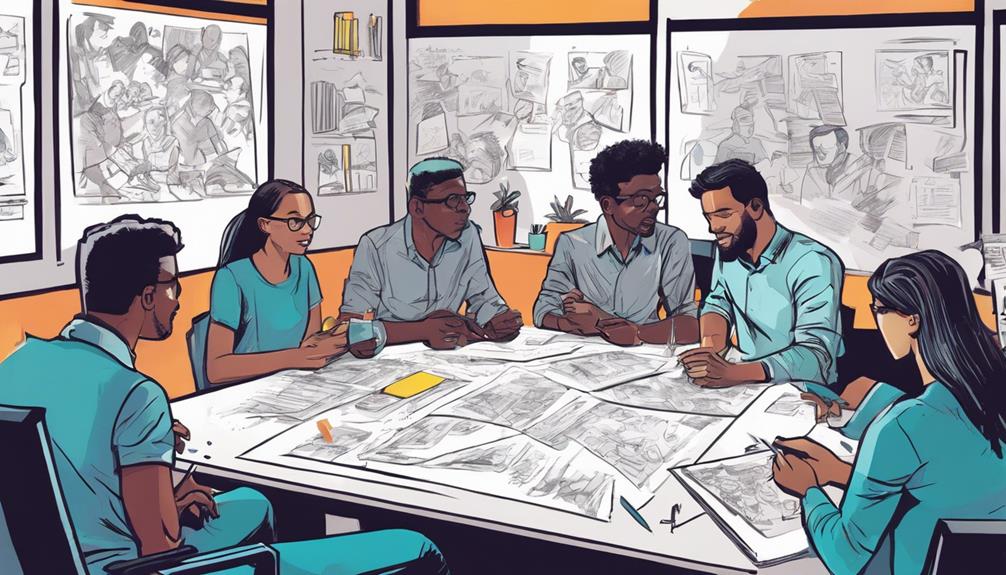
To truly grasp the essence of the design thinking process, understanding its five key stages is essential. Developed at Stanford University, the design thinking process consists of Empathize, Define, Ideate, Prototype, and Test.
In the Empathize stage, a pivotal first step, you focus on understanding user needs through thorough research. This phase involves immersing yourself in the user's experiences to gain deep insights into their perspectives, challenges, and desires.
Moving on to Define, you synthesize the information gathered during Empathize to define the core problem you aim to solve. Ideate encourages creativity by brainstorming a wide range of solutions without judgment.
The Prototype stage involves transforming your ideas into tangible representations for testing. Finally, in the Test stage, you gather feedback from users to refine and improve your prototypes.
The 5 Steps Simplified

Understanding the design thinking process can be simplified by breaking down its five key steps into a clear and actionable framework.
Design Thinking is a method of creative problem-solving that starts with Empathize, where you seek to understand the user's needs.
Next, in Define, you gather insights from Empathize to define the core problem.
Then, Ideate involves brainstorming and generating innovative solutions to address the defined problem.
Prototype follows Ideate, where you create scaled-down versions of solutions to test and gather feedback.
Testing is the final step, where you gather user feedback to refine and improve the solutions created in Prototype.
Key Activities in DT
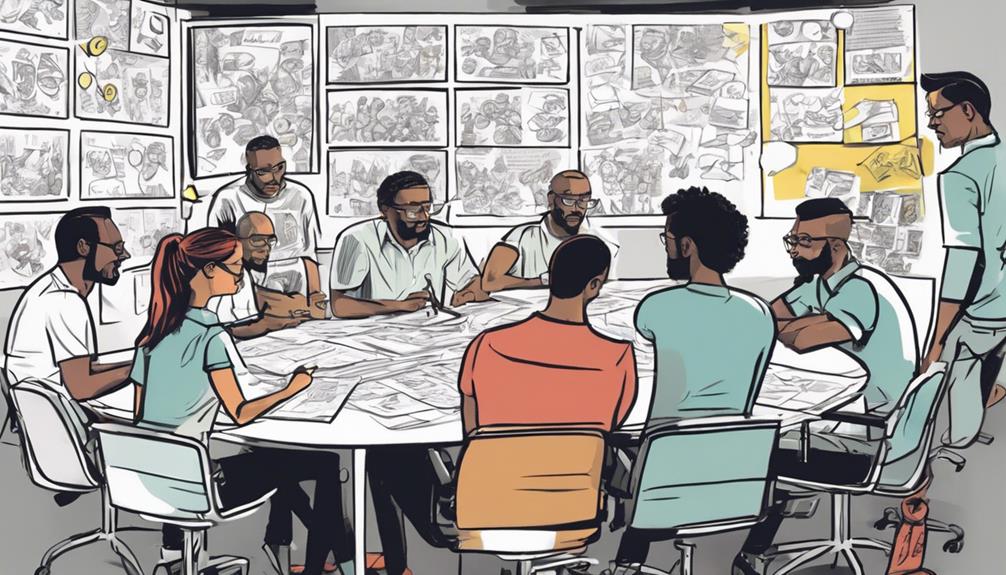
Capture user behaviors, thoughts, and feelings using Empathy Maps as a key activity in the design thinking process. Empathy Maps allow you to gain deep insights into the perspectives of users, aiding in the creation of solutions that truly meet their needs.
During the ideation phase, Clustering and Themes help in organizing and recognizing patterns in the multitude of ideas generated. Brainstorming plays a pivotal role by encouraging the exploration of diverse ideas to tackle challenges in innovative ways.
Engaging in the 'Worst Possible Idea' exercise can push boundaries and foster creative thinking by challenging conventional norms. Prototype Testing is essential for gathering feedback from users, enabling you to refine and enhance your solutions based on real-world insights.
This feedback loop is fundamental for continuous improvement and ensuring that the final product effectively addresses user needs. Embrace these key activities in design thinking to drive the process forward effectively, from ideation to solution refinement.
Facilitation and Co-creation Importance
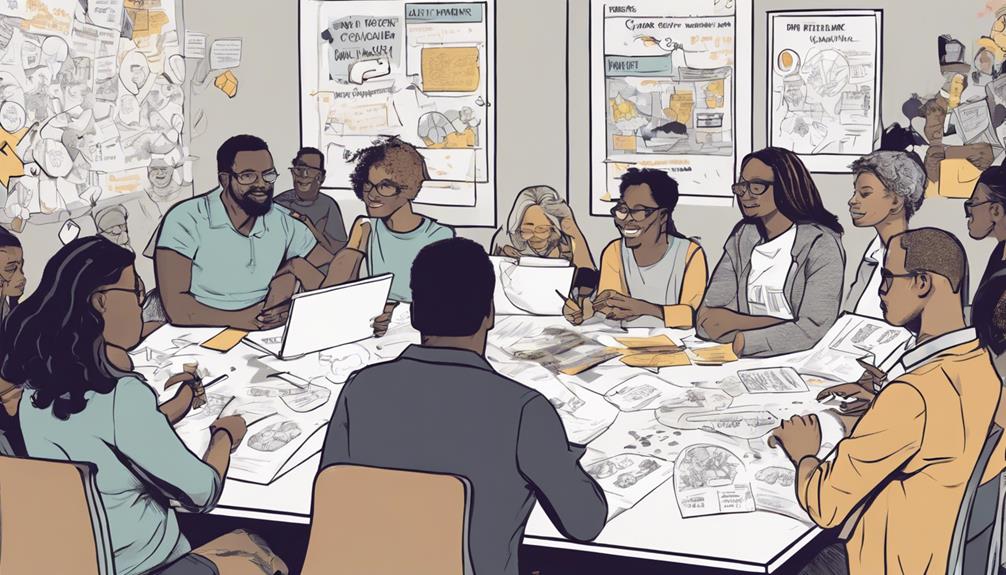
Explore the importance of facilitation and co-creation in design thinking for fostering collaboration and driving successful outcomes.
In the design thinking process, facilitation plays a key role in guiding teams through co-creation projects. Collaboration is essential, as it enhances innovation by bringing together diverse perspectives.
Stakeholder buy-in is necessary for the success of any project, and co-creation fosters this by involving stakeholders from the beginning. Shared ownership of ideas further strengthens commitment and engagement towards achieving the project's goals.
Regular feedback loops during co-creation projects are crucial for refinement, ensuring that solutions meet stakeholders' needs and drive continuous improvement.
End Goal of Design Thinking
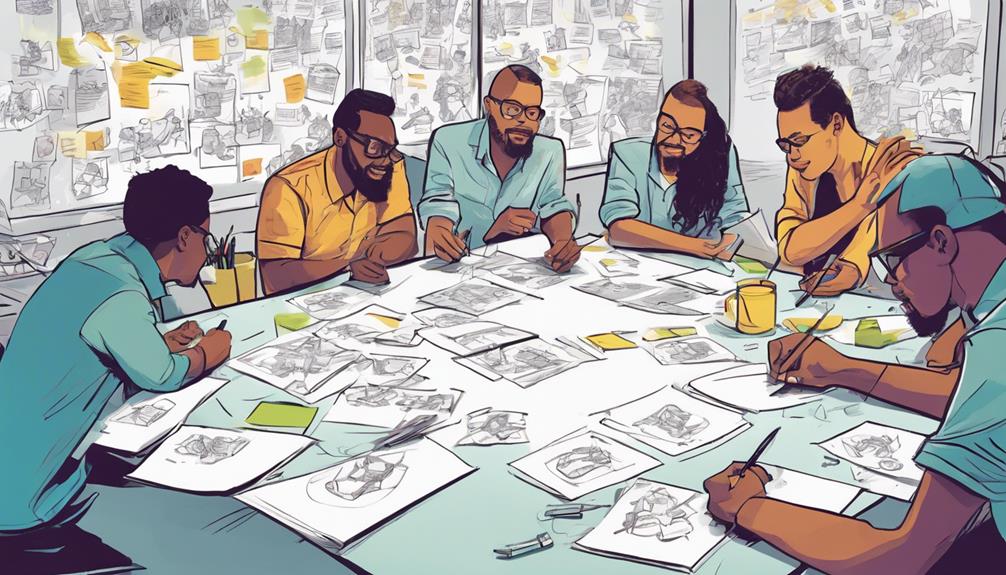
Achieving the end goal of design thinking involves creating solutions that are both desirable, feasible, and viable.
The process begins by addressing human needs and ensuring that the design solutions meet these needs effectively, emphasizing desirability.
Feasibility plays a pivotal role in evaluating the technological possibilities for implementing the proposed solutions. It's essential to contemplate whether the solutions can be practically realized within the given constraints.
Viability focuses on the economic aspect, ensuring that the solutions aren't only desirable and feasible but also capable of generating profits, making them sustainable in the long run.
Design thinking's iterative nature, rooted in human-centered design, allows for continuous refinement of solutions to achieve the end goal of delivering profitable solutions that address human needs effectively while leveraging technological possibilities.
Frequently Asked Questions
What Are the 5 Steps in the Design Thinking Process?
The 5 steps in the design thinking process are Empathize, Define, Ideate, Prototype, and Test. You understand user needs, define problems, brainstorm solutions, create prototypes, and gather feedback to develop innovative, user-centered solutions.
How Do You Master Design Thinking?
To master design thinking, start by understanding the process steps deeply. Practice empathy, divergent thinking, and prototyping. Embrace continuous learning and collaborate effectively with diverse teams. Iterate based on user feedback for successful outcomes.
Is Design Thinking a Onetime Process?
Design thinking isn't a one-time deal. Iterating through the process allows you to gather feedback, test ideas, and continually improve. Embracing this iterative approach supports innovation, flexibility, and adaptation to changing needs.
How Long Does a Design Thinking Process Take?
A design thinking process duration varies based on complexity and team experience. It could range from a few weeks to several months. The iterative nature allows for flexibility in timing, leading to rapid prototyping or in-depth research.
Conclusion
You've now mastered the design thinking process steps in no time! Remember, 'Rome wasn't built in a day.' Keep practicing and refining your skills to truly harness your creativity and problem-solving abilities.
The journey of design thinking is a rewarding one, so embrace the process and watch your innovative ideas come to life.
You're on your way to becoming a design thinking pro!


